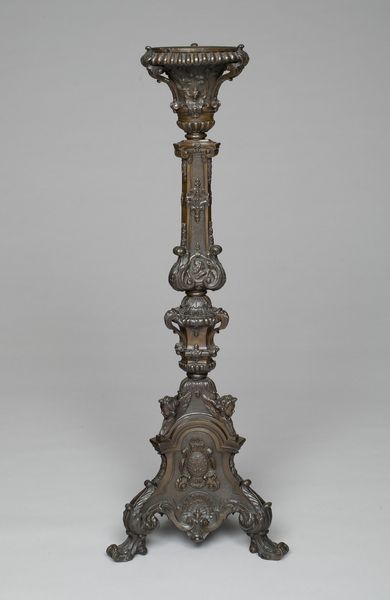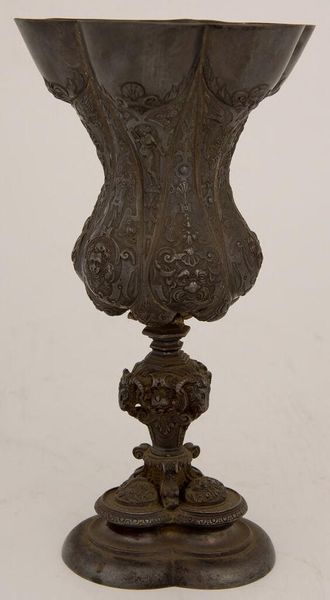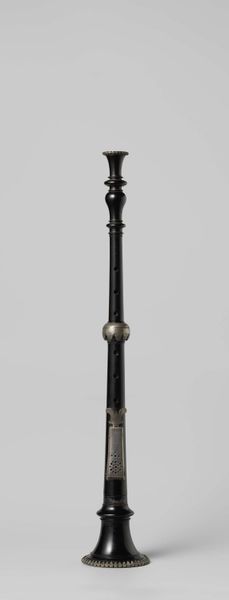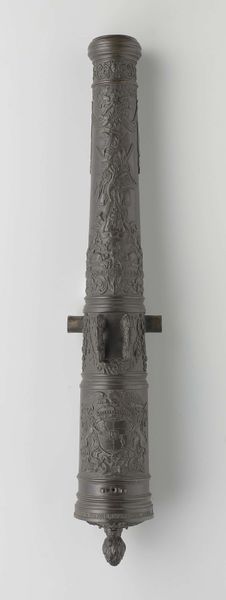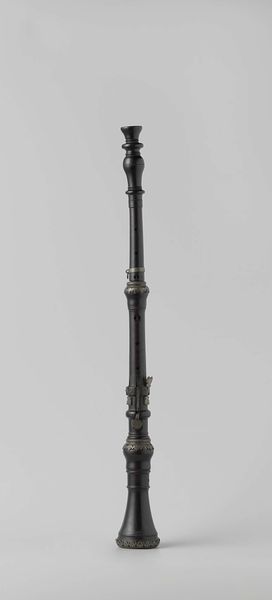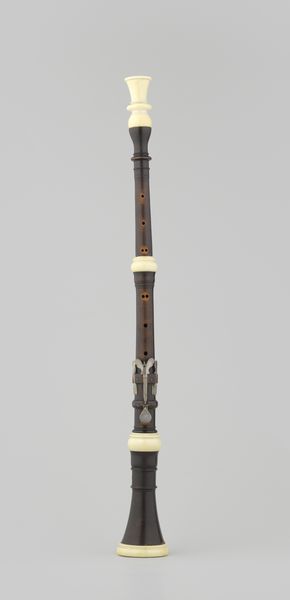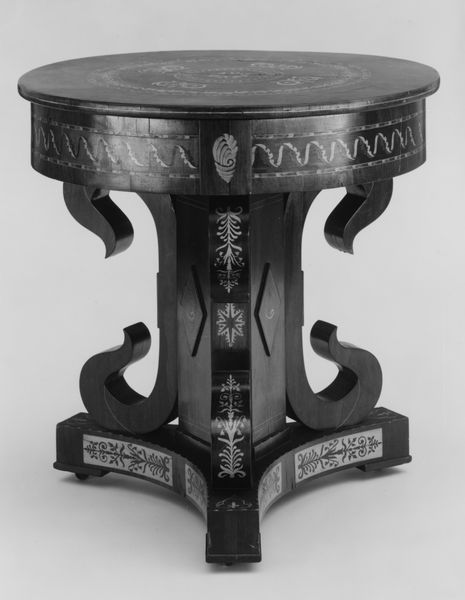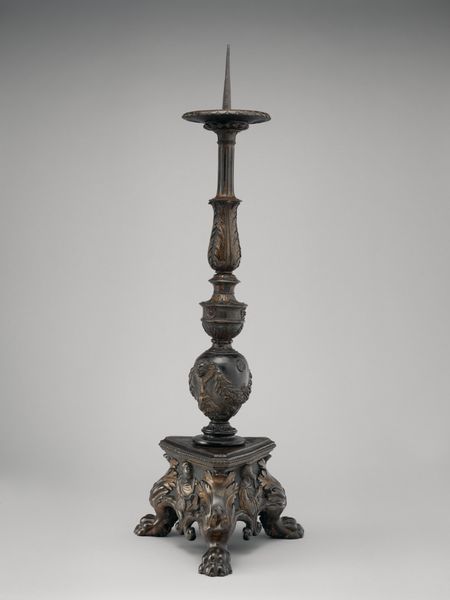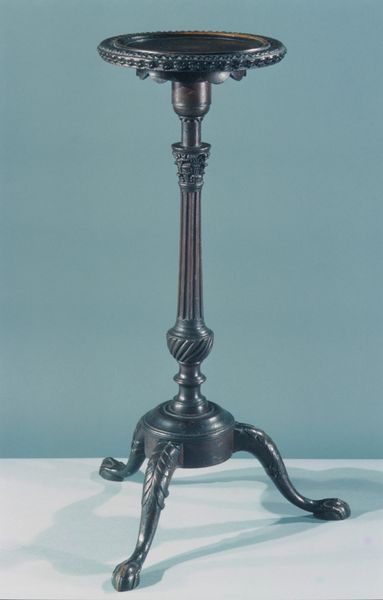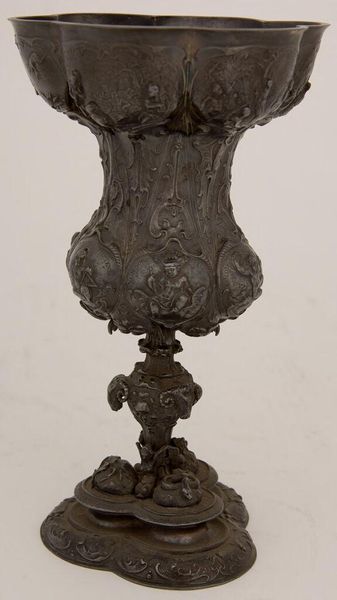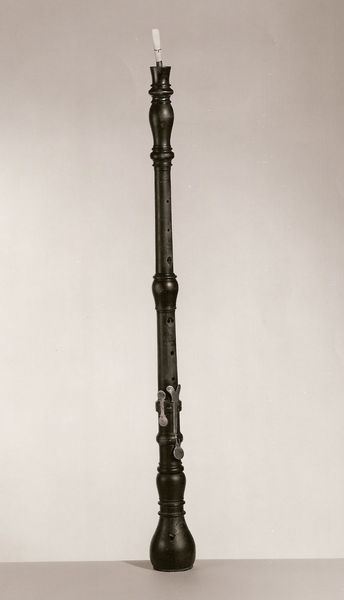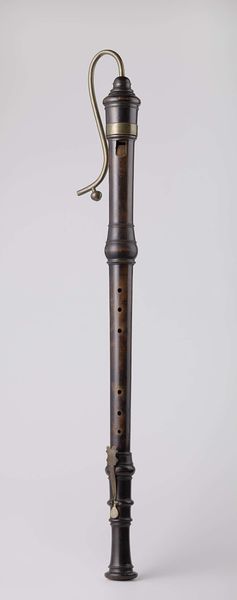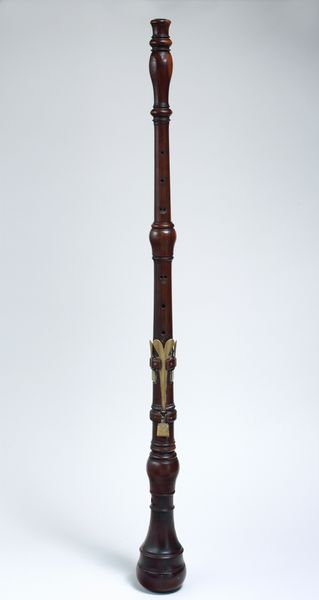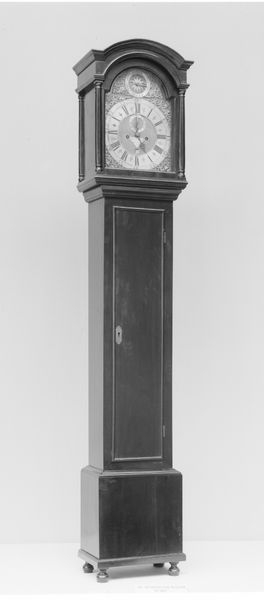
ceramic, sculpture
#
neoclacissism
#
sculpture
#
war
#
ceramic
#
form
#
geometric
#
sculpture
#
decorative-art
Dimensions: 46.4 × 9.5 × 9.5 cm (18 1/4 × 3 3/4 × 3 3/4 in.)
Copyright: Public Domain
Curator: Before us stands "Obelisk," crafted around 1800 by the renowned Wedgwood Manufactory. Its dark ceramic form, currently housed at The Art Institute of Chicago, exudes a somber, imposing aura. Editor: Yes, an aura of restrained mourning almost. Its monochrome palette lends it a rather severe and stoic appearance. Curator: Indeed. The obelisk form, with its strong geometric lines, certainly evokes the Neoclassical ideals of order and rationality. There’s also a visual tension between its smooth surfaces and the intricate relief work near the base. Editor: Which begs the question: what sort of war or political tension might have influenced this piece from around 1800? Obelisks are traditionally monuments, right? Were these being built as a political move by Wedgwood? The small classical figures supporting its upper register also look burdened with their load. Is that part of a message about the price paid for war, perhaps? Curator: An intriguing consideration. If we stick to purely formal analysis for a moment: the figures act as caryatids, mediating between the heavy geometric forms of the obelisk. Note how Wedgwood cleverly employs the matte ceramic to create depth through subtle shading, guiding the eye upward. The piece rises as one unified mass from a clearly delineated ground. The upward direction establishes and affirms order and hierarchy in a stable triangular geometry. Editor: While the structure's upward movement may establish "order", I read the historical moment differently. European society was undergoing significant transformations at the time; there was revolution, destabilizing cultural authority. I wonder how audiences might have read the sculpture then—not as reassurance but anxiety. The obelisk form carries historical weight related to power, yet this replica reduces monumentality to something of a household curiosity in dark monochromatic. Almost like an idol of anxiety instead. Curator: Well, those interpretations certainly bring in a refreshing perspective on its possible readings and meaning. Ultimately, its significance depends, to some degree, on the viewer’s own historical, political, and cultural awareness. Editor: Exactly. And hopefully, that’s what we have done, offered our listeners, different tools to consider this artwork.
Comments
No comments
Be the first to comment and join the conversation on the ultimate creative platform.
